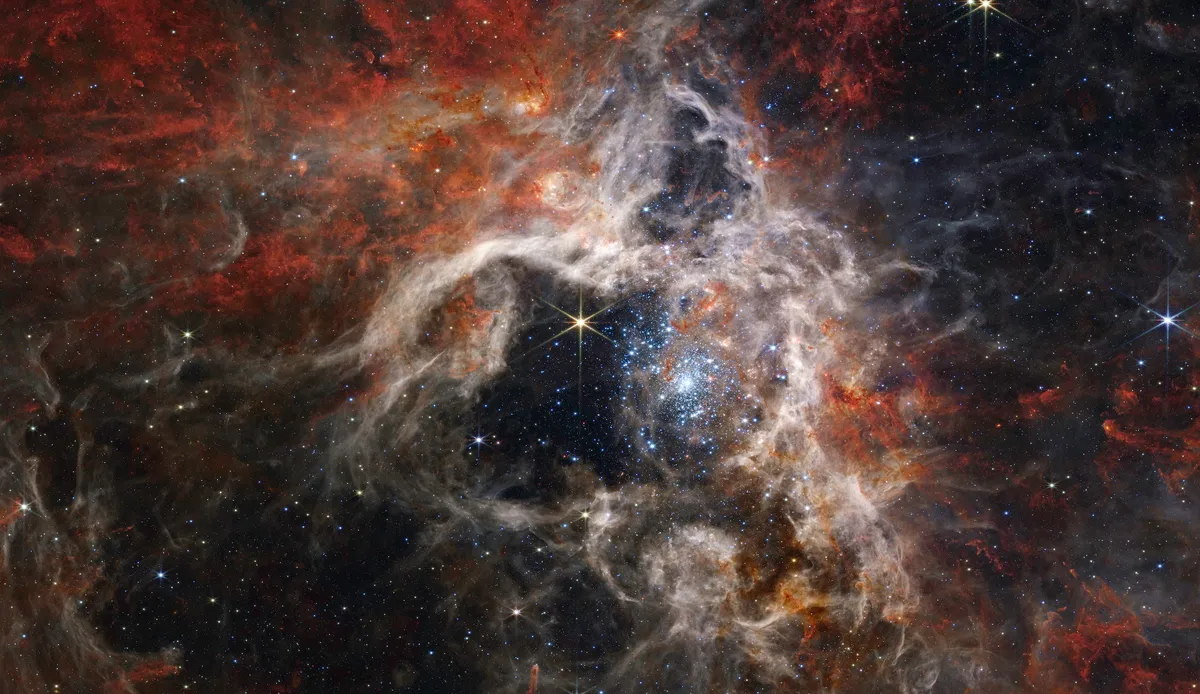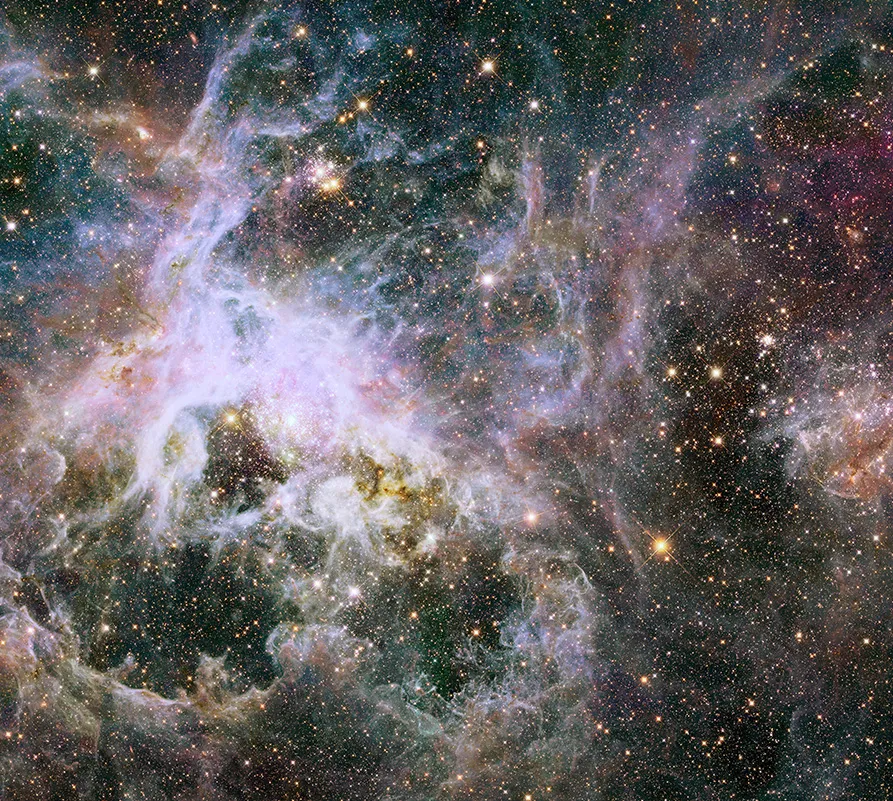A mere 161,000 light-years away in the Large Magellanic Cloud, a small satellite galaxy of the Milky Way, is the Tarantula Nebula. Although the wispy swirls of clouds give a sense of serenity the Tarantula Nebula is actually one of the largest, and most violent star-forming regions in our Local Group.
The Local Group is essentially our galactic neighbourhood, of which our own Milky Way is a part. The biggest member of the group is the Andromeda Galaxy, while keen eyes (under dark and clear skies) may also be able to spot the more distant Triangulum Galaxy, thanks to its relatively bright apparent magnitude. Dozens of smaller dwarf galaxies are also members of the Local Group.
This incredible mosaic image, viewed with JWST's Near-Infrared Camera (NIRCam), stretches 340 light-years across, although the total width of the nebula is more than 1,000 light-years. The nebula is named after the web-like appearance of its dusty filaments that can be seen in previous images, the cavity in the centre resembling a burrowing tarantula’s home, lined with silk.

The nebula is a hotbed for some of the hottest and most massive stars known to astronomers, and in the centre, sparkling blue with massive young stars, is star cluster R136, its most active region.
"R136 sits in the middle of the larger cluster called NGC2070," says Professor Mark McCaughrean, senior advisor for science and exploration at the European Space Agency (ESA).
"R136 is a giant cluster of young stars, far exceeding anything in our own Milky Way galaxy, with almost half a million solar masses. It’s often suggested that it may be a proto-globular cluster, and its huge cumulative luminosity is what lights up the Tarantula Nebula, of which the new JWST image only shows a small fraction," McCaughrean explains.
Blistering radiation has blown away the dusty cocoons that once surrounded these protostars. Left behind is only the densest material, sculpted into pillars and ridges able to resist erosion from these torrential stellar winds.
Within these pillars are more newly-forming protostars. They too, will eventually emerge from their own cosmic cocoons and take their turn in shaping the nebula.
"The JWST image of the Tarantula Nebula was made using mosaics made through four separate infrared filters, F090W, F200W, F335M, and F444W, at 0.9, 2.0, 3.35, and 4.44 microns, respectively," McCaughrean says.
"The first, second, and fourth filters are all broad-band, capturing lots of starlight and nebular emissions. The third, the F335M filter, isolates an important emission line of polycyclic aromatic hydrocarbons, a strong tracer of dust."

"The colour coding in the image is F090W as blue, F200W as green, F335M as orange, and F444W as red. The latter two filters make the dust in the region appear to 'glow' in orange-red colours. In the equivalent Hubble images, these regions are dark," explains McCaughrean.
Read more about JWST: